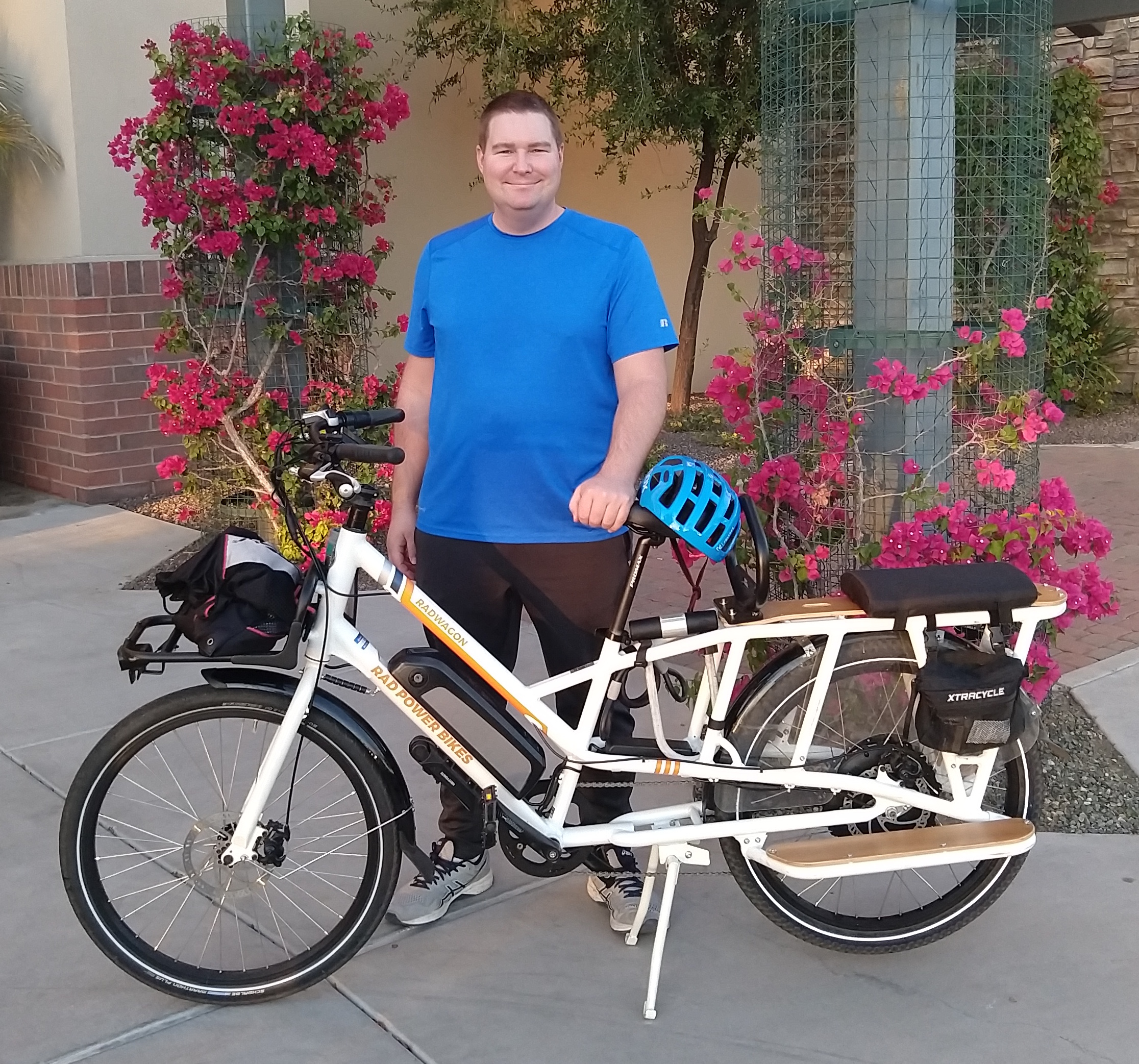The November issue of our AchievABLE Newsletter contains stories on the following:
- 2020 ABLE NRC Ambassador Application: Deadline Extended
- ABLE NRC Ambassador Highlight: Nathaniel Dykstra
- Top Three Questions: November
- October Webinar Archive: Supporting Employment for Transition-Age Youth with Disabilities: How ABLE Accounts and SSA Work Incentives Can Help!
- State ABLE Program News
2020 ABLE NRC Ambassador Application: Deadline Extended
The ABLE National Resource Center is seeking to identify ABLE account owners to participate as ABLE NRC Ambassadors in 2020. This will be our third cohort of ABLE Ambassadors. Click on the following links to learn more about our 2019 ABLE Ambassadors and our ABLE NRC Ambassador/Advisor Alumni.
We are looking for parents/guardians and working-age adults with disabilities who represent a diversity of experiences in terms of their reasons for opening an account, their short- and long-term financial goals related to the account,and how they hope the account will help increase their health, independence and/or quality of life.
We are also looking for diversity represented by selection and participation in different state ABLE programs, type of disability, age, gender, religion, sexual orientation, race and ethnicity.
ABLE NRC Ambassadors receive a $500 contribution to their ABLE account at the end of the year, based on full participation in the Ambassador program. This includes all meetings, regularly scheduled interviews and submission of pictures that will be used to define the ABLE experience.
Applications are due November 15, 2019.
PLEASE NOTE: We experienced a technical difficulty with the Ambassador application form which has been addressed. If you submitted your application before November 1, please email info@ablenrc.org with your full name, phone number and email. We apologize for the inconvenience.
Apply to be a 2020 ABLE NRC Ambassador
ABLE NRC Ambassador Highlight: Nathaniel Dykstra
 Nathaniel Dykstra is a 30-year-old ABLE account owner living in Chandler, Arizona, who opened his account with his home state of Michigan through their MiABLE program. Nathaniel is eligible for ABLE due to Rheumatoid Arthritis, which developed when he was 23 years old and stationed with the U.S. Air Force in Minot AFB, North Dakota. As a result, he was medically retired from the military with a 100 percent disability rating from the Veterans Administration (VA). He receives full disability benefits from the VA.
Nathaniel Dykstra is a 30-year-old ABLE account owner living in Chandler, Arizona, who opened his account with his home state of Michigan through their MiABLE program. Nathaniel is eligible for ABLE due to Rheumatoid Arthritis, which developed when he was 23 years old and stationed with the U.S. Air Force in Minot AFB, North Dakota. As a result, he was medically retired from the military with a 100 percent disability rating from the Veterans Administration (VA). He receives full disability benefits from the VA.
Nathaniel has a Bachelor of Science degree in Finance and Accounting Management, which he says, combined with his experience with his disability, gives him an excellent grasp of the investment needs and opportunities of ABLE account owners. “I started using the ABLE NRC website shortly after the first states started offering ABLE accounts, looking for when a state would offer a program that met my needs. I used the ABLE NRC’s State ABLE Program Comparison Tools to review the account limits, investment options and fees of the different states. I used the links to get to the program websites to read prospectuses [aka the State’s Disclosure Documents]. In the future, I will be using the ABLE NRC website to get details on qualified expenses when I’m ready to start withdrawing from my account.”
Speaking of Qualified Disability Expenses (QDEs), the electric bike that Nathaniel recently purchased would have been covered as a QDE from his ABLE account. The bike adds significantly to his quality of life. It helps Nathaniel get exercise on his good days in a way that accommodates his disability while providing a great transportation alternative to his car. He says he’s amazed at how much he goes out now and attributes this to the safety of an electric motor to help him get home if he doesn’t have the strength to pedal. Nathaniel uses the electric-assist cargo bike to get groceries and carry other items. It also helps with his circulation and building muscle mass, and he’s able to bike without using knee braces since he doesn’t have to use as much force to propel this bike. Nathaniel uses the bike more than his car now.
 However, despite it being a QDE, Nathaniel went ahead and purchased his electric bike out-of-pocket. Nathaniel’s strategy works for him since he only receives VA benefits with no other means-tested benefits and was able to save enough to do so. When asked, “Why didn’t you use your ABLE account funds to purchase your electric bike if it would be a QDE?” Nathaniel answered, “Because I want to maximize my long-term wealth building in a tax-advantaged account.”
However, despite it being a QDE, Nathaniel went ahead and purchased his electric bike out-of-pocket. Nathaniel’s strategy works for him since he only receives VA benefits with no other means-tested benefits and was able to save enough to do so. When asked, “Why didn’t you use your ABLE account funds to purchase your electric bike if it would be a QDE?” Nathaniel answered, “Because I want to maximize my long-term wealth building in a tax-advantaged account.”
Nathaniel is working on maxing out contributions into his ABLE account without pulling any money out for as long as possible, which supports his long-term ABLE goal. He opened his ABLE account because he wanted to have a tax-advantaged way to save for future housing expenses. “I like living in an apartment since I can’t handle interior or exterior maintenance, but that means I can’t own the place. I want to build a large enough fund that will pay my rent, including future rent increases, at a sustainable withdrawal rate. If I get married in the future, an ABLE account will also allow me to cash it out to purchase a house or condo.”
Top Three Questions: November
What happens if an ABLE account owner medically improves and is no longer eligible for the ABLE account?
If a beneficiary no longer meets eligibility requirements and they no longer qualify for an ABLE account, their account will remain open, and they can continue to use and make contributions to the account until the end of the calendar year. After the end of the year, they stop being eligible. New contributions are not permitted, and account withdrawals will be treated as non-qualified withdrawals. Interest earned on the withdrawals may then be subject to income taxes.
Non-qualified withdrawals may affect eligibility for Supplemental Security Income (SSI) and other federal benefits. If or when all of the money is withdrawn, the account will close. An individual who has medically improved may wish to pre-pay or purchase Qualified Disability Expense (QDE) items or services in advance of the due date so that they can be paid before the end of the calendar year in which medical improvement occurred. Please review the webinar on QDEs for more information.
How can I register for upcoming webinars and view archived recordings?
You can register for upcoming webinars and view archived recordings on our website. Click on “resources” and then “webinars.” Or go straight to our webinars page on the website. Our webinars, along with a transcription and related material, are posted within two weeks of the live webinar.
Where can I find Social Security Administration policy guidance on ABLE accounts?
You can find guidance on how funds in an ABLE account interact with Social Security benefits, specifically SSI, in the Social Security Administration (SSA) Policy Operations Manual System (POMS). In addition, the Case Summary Series provides guidance.
Webinar Archive: Supporting Employment for Transition-Age Youth with Disabilities: How ABLE Accounts and SSA Work Incentives Can Help!
In October, in recognition of National Disability Employment Awareness Month (NDEAM), our monthly webinar focused on educating transition-age youth with disabilities, their families, providers and advocates on how effective use of an ABLE account, in addition to supports and work incentives offered by the Social Security Administration (SSA) to Supplemental Security Income (SSI) and/or Social Security Disability Insurance (SSDI) beneficiaries, can improve the life trajectory of transition-age youth.
State ABLE Program News
- According to an announcement from Ohio Treasurer Robert Sprague, as of November 1, the STABLE account program exceeded $100 million in total contributions made since its launch in 2016. Learn more.
